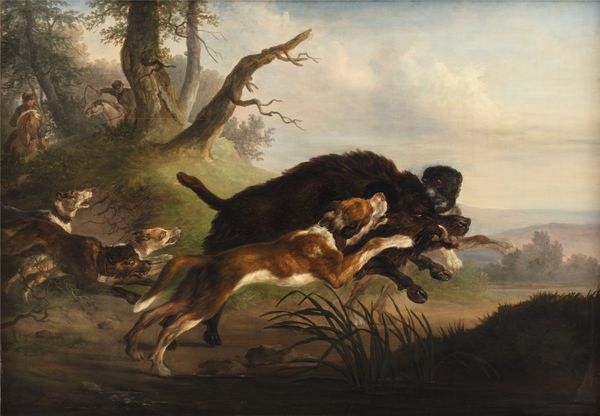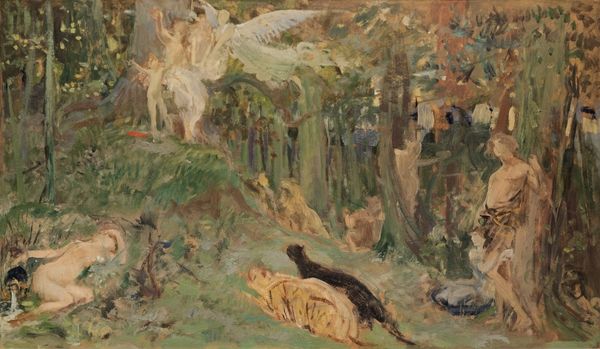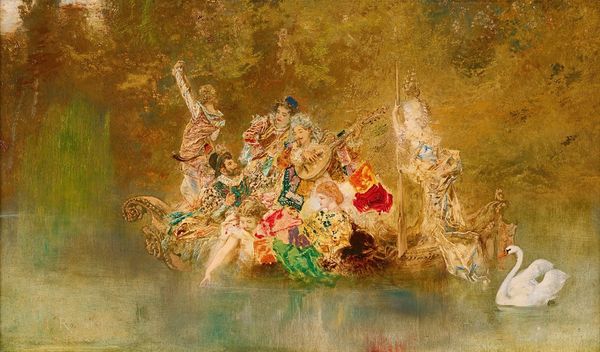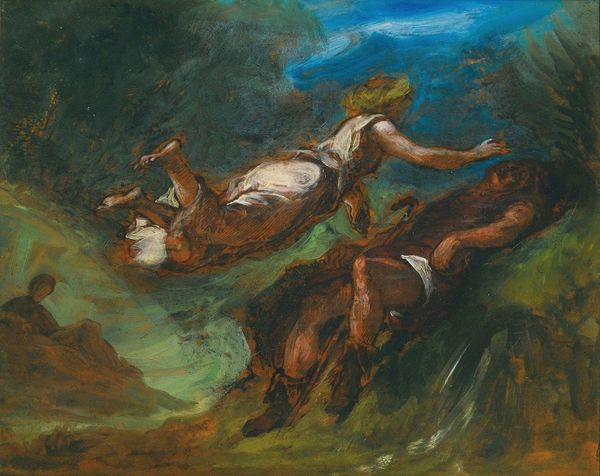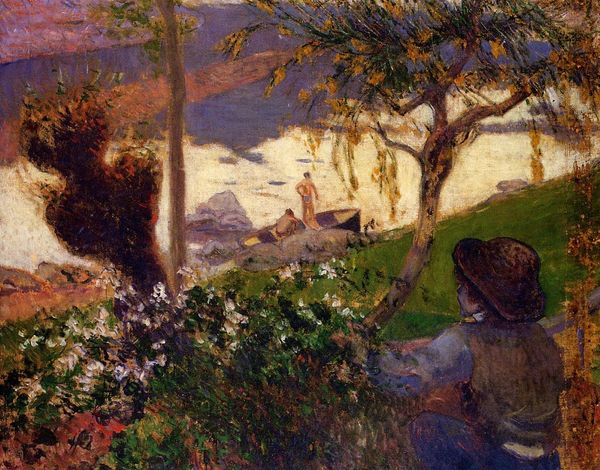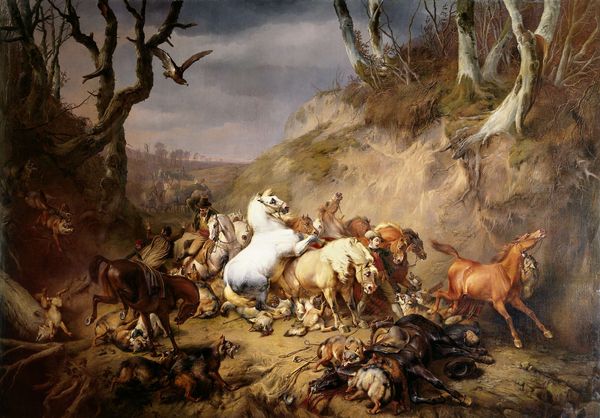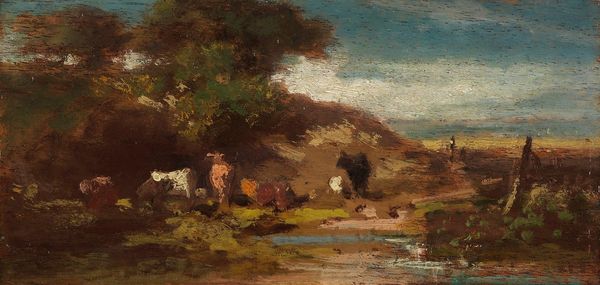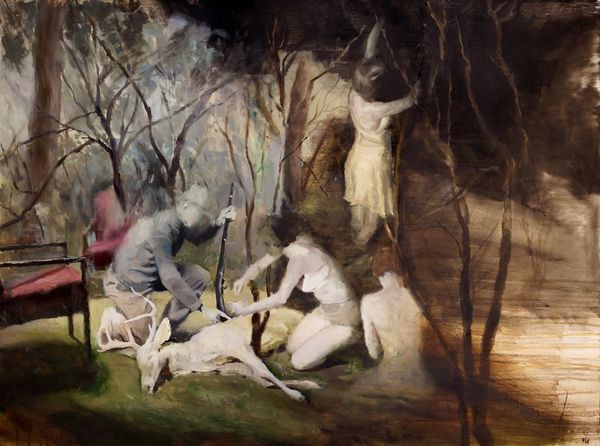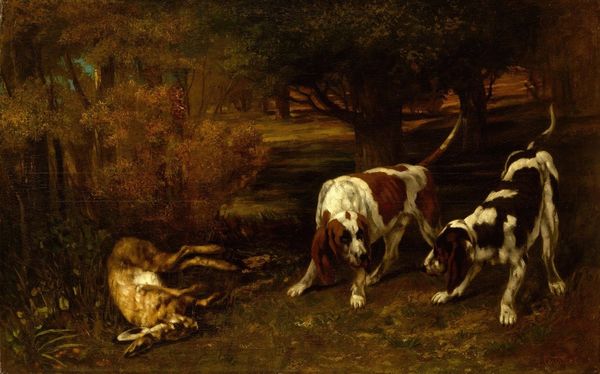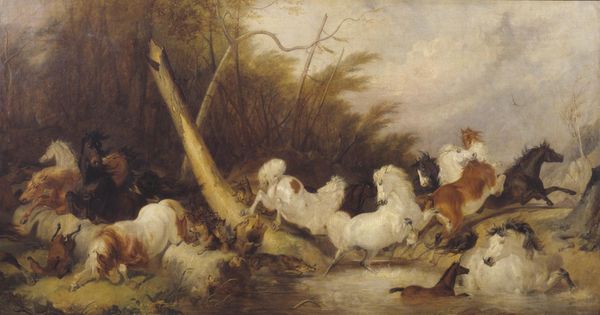
Copyright: Public Domain: Artvee
Editor: Hans Makart's "Die Nixen And Der Tiger," painted around 1872-73, is an oil painting that immediately strikes me as a kind of fever dream. The figures are sensuous, almost lost in the shadowy landscape. What symbols or stories do you see interwoven in this work? Curator: The persistence of classical imagery here is quite remarkable, isn't it? Nymphs, those semi-divine figures, were powerful symbols of nature’s allure, deeply woven into the cultural memory of the time. Consider how Makart juxtaposes them with the tiger. What does the presence of the tiger evoke for you? Editor: Danger, maybe? Or a raw, untamed side of nature contrasting with the nymphs’ beauty. Curator: Precisely! And think about the painting’s period. The late 19th century saw both a fascination with and fear of unchecked forces. The tiger might symbolize not just danger, but the primal, instinctive energies that lurk beneath civilization's veneer. Do you see any hints of this tension within the formal composition itself? Editor: Now that you mention it, there's a contrast between the vibrant, almost chaotic, energy of the nymphs and the dark, looming forest around them. It feels unbalanced, uneasy. Curator: Indeed. It speaks to a Romantic sensibility—the embrace of intense emotion and the sublime. This composition, loaded with imagery, prompts questions about control, desire, and our relationship with the natural world, reflecting the anxieties and enthusiasms of its time. It’s not just decoration. Editor: I didn't think about it that way before, seeing the cultural anxieties play out with the Nymphs and Tiger, so fascinating. Curator: Exactly! The painting speaks volumes about how artists use images to explore their world, and transmit the fears and ideals of the past into our present.
Comments
No comments
Be the first to comment and join the conversation on the ultimate creative platform.
